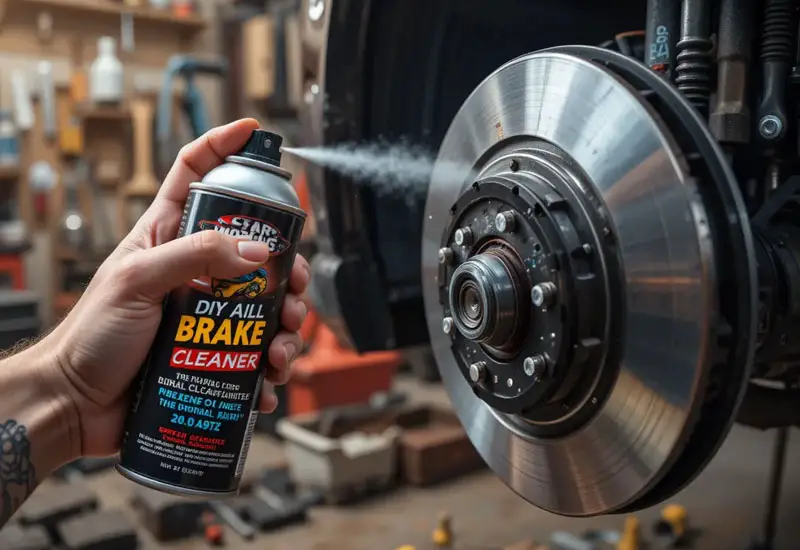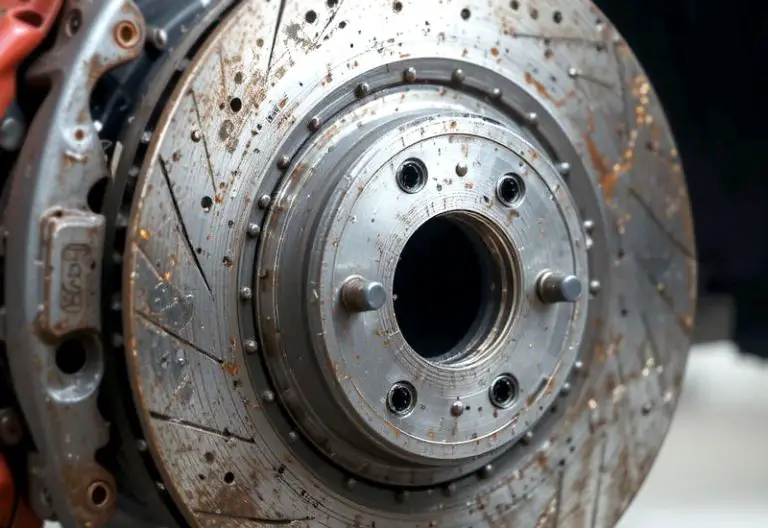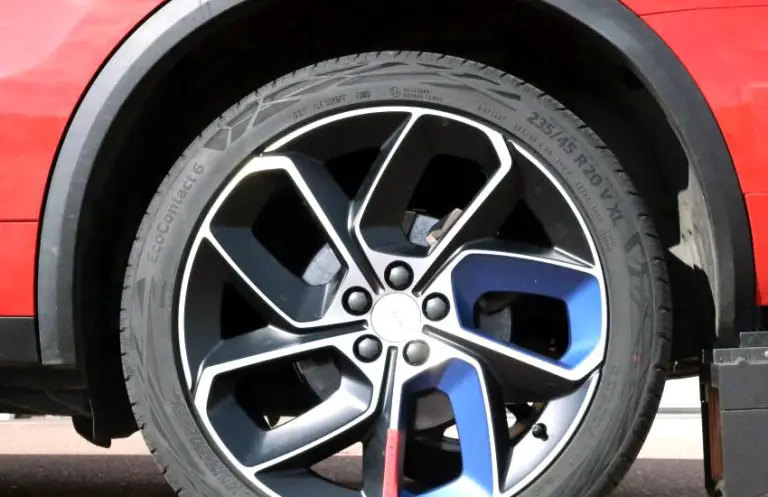Have you ever reached for that can of brake cleaner, thinking it’s the ultimate solution for cleaning your car? Well, you’re not alone! But here’s the question that might be on your mind: Will brake cleaner cause damage to plastic? If you’ve ever used it on your car’s plastic components, you might be wondering if you’ve made a mistake. Let’s dive into this topic, break it down, and find out whether brake cleaner is safe for your plastic surfaces or not.
Understanding Brake Cleaner and Its Purpose
When it comes to cleaning your car, brake cleaner is often the go-to solution for getting rid of grime, grease, and built-up dirt. It’s a powerful tool used by both professionals and DIY enthusiasts alike. But like anything powerful, it can come with risks, especially when you use it improperly. You might be tempted to spray brake cleaner on every surface that needs a little TLC, but there are some important things you should know before you reach for that can. Specifically, is it safe to use brake cleaner on plastic parts?
Brake cleaner is designed to clean parts of your car that are prone to grease, dirt, and oil buildup—typically parts like brakes, rotors, and other metal components. It’s highly effective in breaking down these substances, leaving behind a clean surface for further maintenance. However, not all surfaces in your car are made of the same material, and not every material can handle brake cleaner without suffering damage.

What Is Brake Cleaner Made Of?
To better understand whether brake cleaner can damage plastic, it’s important to first look at its composition. Brake cleaner is usually a blend of various solvents, oils, and chemicals specifically chosen to dissolve oil and grease. Common ingredients found in brake cleaner include acetone, toluene, methanol, and chlorinated hydrocarbons. These chemicals work wonders on stubborn grease and grime, but they also have the potential to harm certain materials, especially plastics.
While the exact formulation of brake cleaners may vary by brand, the main objective is the same: to clean thoroughly. The problem arises when these harsh chemicals come into contact with plastics. The strong solvents that break down grease and oil can also affect the molecular structure of plastic, leading to cracking, discoloration, and even melting in extreme cases. So, before applying brake cleaner to plastic surfaces, it’s important to understand its makeup and how these chemicals interact with different materials.
Types of Brake Cleaner
There are two main types of brake cleaners: non-chlorinated and chlorinated. Non-chlorinated brake cleaner typically contains acetone, methanol, and other alcohol-based solvents. Chlorinated brake cleaner, on the other hand, contains chlorine compounds like trichloroethylene or perchloroethylene. These are both powerful solvents, but they can be even harsher on certain types of plastics.
Key Ingredients to Be Cautious Of
- Acetone: This is a solvent that dissolves many types of materials, including some plastics, causing them to weaken or even melt.
- Toluene: Often found in brake cleaners, this chemical can soften plastic and cause it to become brittle over time.
- Chlorinated Hydrocarbons: These are highly effective at dissolving grease but are also known to damage plastics by causing stress fractures or discoloration.
Understanding the ingredients in brake cleaner will help you recognize why it might cause harm to plastic surfaces.
Types of Plastics: Are All Plastics the Same?
Before we jump into the risks of using brake cleaner on plastic, it’s crucial to recognize that not all plastics are created equal. There are hundreds of different types of plastics, each with its own properties and behaviors when exposed to certain chemicals. Some plastics are designed to be durable and resistant to harsh chemicals, while others are more delicate and vulnerable.
Plastics used in automotive parts come in various forms, and these can be broadly categorized into thermoplastics and thermosetting plastics. Both types have different levels of resilience to brake cleaner.
Thermoplastics
These plastics soften when heated and harden when cooled, making them ideal for molding into shapes. Examples of thermoplastics in cars include:
- Polypropylene (PP): Used in bumpers and interior parts, polypropylene is relatively resistant to many chemicals.
- Polyethylene (PE): Found in gas tanks and fuel lines, polyethylene is known for its chemical resistance.
- Acrylonitrile Butadiene Styrene (ABS): ABS is commonly used in dashboards and other interior parts but can be vulnerable to certain solvents.
Thermosetting Plastics
Unlike thermoplastics, thermosetting plastics do not soften when heated. Once they’re set, they’re harder and more durable but can also be more sensitive to certain chemicals. Common thermosetting plastics in cars include:
- Epoxies: Used in adhesives and coatings.
- Phenolic: Used in electrical components and certain car parts.
How Brake Cleaner Affects Plastic
When brake cleaner comes into contact with these different plastics, the reaction can vary. Some plastics are more resilient and may not suffer any noticeable damage, while others can begin to crack, discolor, or soften after just one application. The most vulnerable plastics tend to be those used for decorative purposes, such as the trim, dashboards, and other interior components.
General Rules to Follow
If you’re dealing with thermoplastics like ABS or PE, it’s better to be cautious. If you have thermosetting plastics in your car, avoid using brake cleaner altogether unless the product is clearly labeled as safe for such materials.
Potential Risks of Using Brake Cleaner on Plastic Surfaces
Now, let’s get into the risks. While brake cleaner is fantastic at cleaning brake parts and other metal components, it can cause significant damage to plastic surfaces if not used properly. The primary issue is that brake cleaner’s strong solvents can dissolve or degrade plastics over time, leading to various forms of damage.
Cracking and Brittleness
One of the most common consequences of using brake cleaner on plastic is cracking. The solvents in the brake cleaner can weaken the plastic, making it more prone to stress cracks. Even a single application of brake cleaner can cause parts of your plastic components to become brittle, especially if the plastic is already aged or worn.
Discoloration and Fading
Brake cleaner is also known to cause discoloration in plastic. It can cause the plastic to turn yellow or cloudy, leaving it looking dull and aged. This effect is particularly noticeable on clear plastics or those with glossy finishes, such as headlight covers or interior trim. It can ruin the aesthetics of your vehicle, making it look less polished and well-maintained.
Surface Damage and Melting
In extreme cases, brake cleaner can melt plastic. This happens when the solvent is too strong for the material, causing it to soften and lose its shape. Melting can be especially problematic on plastic parts that are exposed to heat, such as around the engine or under the hood. Parts like hoses or plastic engine covers can warp or lose their integrity entirely.
Chemical Reaction and Fumes
Another risk is the chemical reaction that might occur when brake cleaner interacts with certain plastics. Some plastics, when exposed to strong solvents, can release dangerous fumes. These fumes are not only unpleasant but can also be harmful to your health if inhaled in high quantities.
How Brake Cleaner Affects Different Types of Plastic
As we already touched on, different plastics react differently to brake cleaner. Let’s go into more detail on how brake cleaner can affect various types of plastic commonly found in cars.
ABS Plastic
ABS (Acrylonitrile Butadiene Styrene) is one of the most commonly used plastics in car interiors. It’s durable, but brake cleaner can cause it to weaken over time. The solvents in the cleaner can cause the plastic to soften, which might lead to cracking or chipping. If you accidentally spray brake cleaner on your dashboard or trim pieces, you may notice these effects after a few uses.
Polycarbonate
Polycarbonate is a highly durable plastic used in car windows, headlight covers, and other clear parts. Brake cleaner can cause polycarbonate to become cloudy or develop a frosted appearance, which diminishes its transparency. If you use brake cleaner on polycarbonate windows or headlight lenses, they may lose their clarity over time.
Vinyl and Leather
Vinyl and leather, though not technically plastics, are often treated as such in automotive care. Brake cleaner can strip the protective coating from vinyl surfaces, leading to fading and cracking. On leather, the chemicals in brake cleaner can dry out the material, leaving it stiff and brittle.
Signs of Damage: How to Identify If Brake Cleaner Has Affected Plastic
It’s not always immediately obvious if brake cleaner has damaged plastic surfaces. However, there are several signs you can look for that indicate the plastic may have been harmed.
Cracking and Brittle Texture
One of the first signs of damage is cracking. If you notice small fractures or chips in the plastic, it’s a clear sign that the brake cleaner has compromised its structure. You might also notice the plastic becoming increasingly brittle, meaning it can break or snap more easily than before.
Faded or Yellowing Color
Another sign is color fading. If the plastic becomes yellowed or discolored, it could be because of the harsh solvents in brake cleaner breaking down the material’s surface. This is especially noticeable on light-colored plastics, such as interior trim or headlights.
Softening or Warping
In more severe cases, you may notice that the plastic starts to feel soft or warped. This is a result of the plastic losing its structural integrity, either from the chemical reaction or from excessive exposure to the brake cleaner. Soft plastic can be pushed out of shape, and this may be irreversible.
Best Practices for Using Brake Cleaner Safely on Plastic
If you’re determined to use brake cleaner on your plastic parts, there are a few best practices to follow to minimize the risk of damage.
Always Test on a Small Area First
Before applying brake cleaner to any plastic surface, always test it on a small, inconspicuous area. This will allow you to see how the plastic reacts without risking visible damage.
Use a Gentle Cleaner for Plastic
If you’re specifically looking to clean plastic parts, it might be better to use a cleaner that is designed for use on plastics. These products are typically milder and less likely to cause damage.
Apply in Small Amounts and Wipe Off Immediately
When using brake cleaner, apply it sparingly and immediately wipe it off with a soft cloth. Avoid letting the cleaner sit on the plastic for too long, as prolonged exposure can increase the risk of damage.
Use Protective Coatings
After cleaning plastic parts, consider using a protective coating or plastic conditioner. These products help restore the integrity of the plastic and protect it from future exposure to harmful chemicals.
I hope this article has helped clear up whether brake cleaner can damage your plastic components. The short answer is that it can, especially if you don’t take precautions. It’s always a good idea to be cautious when using strong solvents like brake cleaner on plastic surfaces. Stick to the guidelines, and when in doubt, use a cleaner designed for plastic.
Frequently Asked Questions
Is it safe to use brake cleaner on plastic parts?
Brake cleaner can be harmful to plastic, as the strong solvents can cause cracking, discoloration, and even melting. Always test it on a small area first.
Can brake cleaner be used on car bumpers?
Car bumpers are often made of durable plastics like polypropylene, which may handle brake cleaner better than other types of plastic, but it’s still best to use caution.
Do I need to protect plastic parts before using brake cleaner?
Yes, it’s recommended to protect plastic parts by testing in a small area first and using a plastic-safe cleaner for long-term care.
Is it okay to use brake cleaner on headlights?
Brake cleaner can damage polycarbonate or acrylic headlights by causing clouding or yellowing. Use products specifically designed for headlights.
Can brake cleaner be used on vinyl interior parts?
Brake cleaner can damage vinyl by stripping its protective coating, so it’s best to avoid using it on vinyl surfaces.
Do I need to rinse off brake cleaner after use?
Yes, it’s always a good idea to rinse off brake cleaner thoroughly to avoid any lingering chemicals that could harm the surface.
Is it safe to use brake cleaner on engine parts?
Brake cleaner is commonly used on engine parts like brakes and rotors. However, be careful with plastic components in the engine bay.
Can brake cleaner be used on plastic trim?
Brake cleaner can damage plastic trim by causing cracking, fading, or warping. Use a plastic-specific cleaner to avoid these issues.


